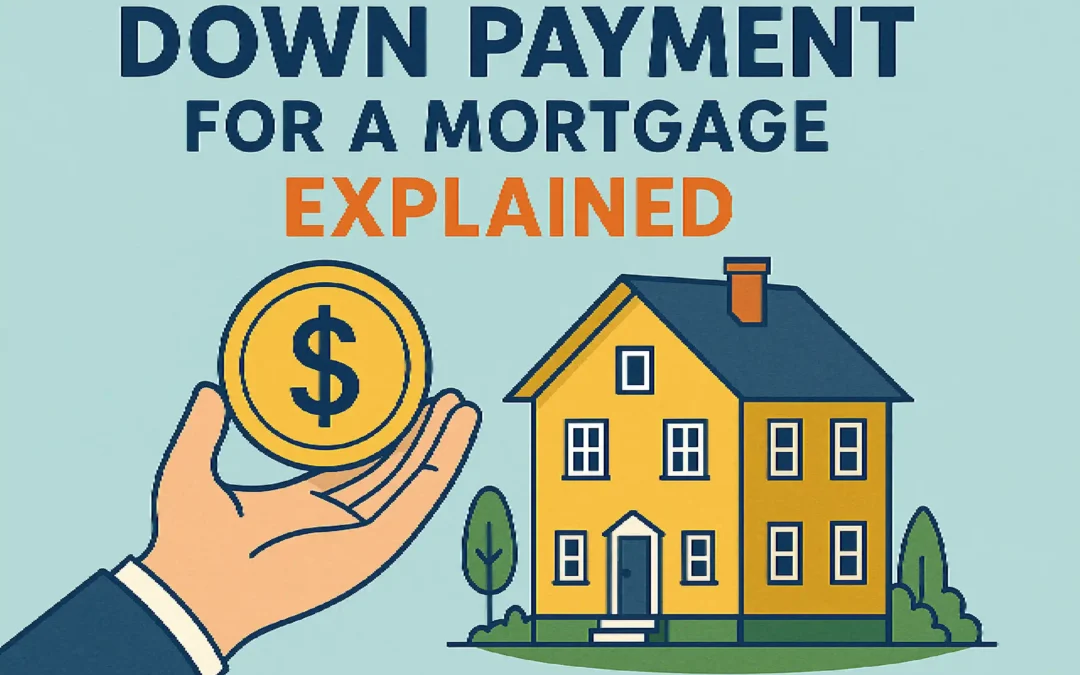Buying a home is one of the most significant financial decisions most people make. Whether you’re a first-time buyer or looking to upgrade, one key factor that determines how easily you secure your dream home is your down payment for a mortgage. It affects not only your mortgage approval but also your interest rate, loan amount, and monthly payments.
Understanding how much to put down, what lenders expect, and how it impacts your home financing journey can make your mortgage loan approval process smoother and more rewarding.
Key Takeaways
- A down payment represents your upfront contribution toward the property’s purchase price.
- The average mortgage down payment in Canada typically ranges between 5% and 20%, depending on the lender and property type.
- A higher down payment often means a lower mortgage rate, reduced loan insurance costs, and quicker equity growth.
- Programs and strategies exist to help first-time homebuyers save and qualify for mortgages with low down payments.
What is a Down Payment for a Mortgage?
A down payment for mortgage purposes is the amount of money you pay upfront when purchasing a home. The remaining balance is financed through a home loan, which you repay over time through monthly mortgage payments.
For example, if you buy a $500,000 home and make a 10% down payment ($50,000), you’ll finance the remaining $450,000 through a mortgage.This payment serves as a sign of commitment and reduces risk for the lender, improving your chances of mortgage approval.
If you’re new to home financing, understanding what is a mortgage can help clarify the process — it’s essentially a loan secured by your home that you repay in installments over an agreed period. Working with a trusted expert like QuickMortgagesBC can guide you through the process, help you explore your options, and make the mortgage approval and down payments journey much easier.
Minimum Down Payment Requirements in Canada
The minimum down payment requirements vary depending on your home’s purchase price:
- 5% for homes priced under $500,000
- 10% on the portion of the price above $500,000
- 20% minimum for homes over $1 million
If your down payment is less than 20%, mortgage default insurance (commonly called CMHC insurance) is required. This protects lenders but adds to your overall cost.
Example:
A $600,000 home requires:
- 5% of the first $500,000 = $25,000
- 10% of the remaining $100,000 = $10,000
Total minimum down payment = $35,000
How Much Down Payment is Needed to Secure a Mortgage?
While 5% may be the legal minimum, most mortgage advisors recommend aiming for at least 10–20% when possible. A larger down payment helps:
- Lower your overall loan balance
- Reduce monthly payments
- Strengthen your mortgage application during the approval process
Lenders see a higher down payment as lower risk, which can increase your mortgage approval chances and qualify you for better rates.
Does a Higher Down Payment Improve Mortgage Approval Chances?
Yes, absolutely. A higher down payment demonstrates financial stability, which gives lenders greater confidence in your ability to manage repayment. It can also:
- Lower your loan-to-value ratio (LTV).
- Reduce or eliminate mortgage insurance costs.
- Help you negotiate lower interest rates.
This is particularly beneficial if you have variable income, are self-employed, or are applying for a low-down-payment mortgage with a smaller deposit.
Down Payment Tips for Homebuyers
If you’re saving for a down payment, consider these practical strategies to reach your goal faster:
- Automate savings: Set up recurring transfers to a high-interest savings account dedicated to your home fund.
- Reduce high-interest debt: Pay off credit cards or personal loans to improve your debt-to-income ratio before applying.
- Explore government programs: Canada’s First Home Savings Account (FHSA) and Home Buyers’ Plan (HBP) allow you to use RRSP savings for your down payment without tax penalties.
- Cut unnecessary expenses: Track spending and redirect non-essential costs into your home savings.
- Work with a professional: A mortgage broker in Surrey, BC can guide you through lender comparisons, incentive programs, and the entire mortgage loan approval process.
Down Payment and Its Impact on Mortgage Rates
Your mortgage rate depends on your down payment as well as approval.
- Higher down payment: Often results in lower interest rates and better terms since the lender’s risk decreases.
- Lower down payment: May lead to slightly higher rates and additional insurance premiums.
Over the long term, even a 0.5% difference in rate can translate to thousands in savings. Therefore, increasing your down payment percentage is one of the most effective ways to lower your overall cost of borrowing.
Conclusion
The down payment for a mortgage is more than just a cost up front. It’s also a way to build financial stability, get better loan terms, and make homeownership easier. Whether you’re buying your first condo or your forever home, understanding how your down payment affects mortgage approval, rates, and insurance helps you make smarter decisions.
If you’re exploring your options or want expert advice tailored to your financial situation, consider working with a professional mortgage broker in Surrey, BC who can guide you through the process and connect you with the right lenders.
FAQs
1.What is a down payment on a mortgage?
It’s the upfront amount you pay toward the purchase price of your home. A mortgage loan covers the rest.
2.How much down payment is typically required?
In Canada, you need at least 5% for homes under $500,000 and 10% for the portion above that amount.
3.Can I get a mortgage with a low down payment?
Yes. Several programs allow low-down payment mortgages, especially for first-time homebuyers, though you’ll need mortgage default insurance.
4.How does a down payment affect interest rates?
Larger down payments usually result in lower interest rates because the lender faces less risk.

